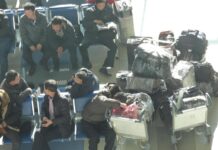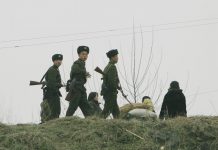
There were more inter-Korean summits during the Moon Jae-in administration than at any time since the Korean Peninsula was divided. In particular, a long-awaited thaw on the Korean Peninsula began in 2018, when North Korean athletes participated in the Winter Olympics in Pyeongchang. Three inter-Korean summits followed, seemingly marking a significant milestone in North-South relations. However, this atmosphere proved fleeting, and in June 2020, Kim Yo Jong – the powerful sister of North Korean leader Kim Jong Un – ordered the explosive demolition of the inter-Korean liaison office in Kaesong. At this point, inter-Korean relations began to fracture, and with the start of the Yoon Suk Yeol administration in 2022, relations between the North and South were strained and tense.
At the beginning of 2024, North Korea’s hardline policy towards the South became even more harsh. Speaking at the 10th session of the 14th Supreme People’s Assembly on January 15, Kim Jong Un called for the removal of phrases such as “northern half” and “independence, peaceful reunification and great national unity” from the North Korean constitution and the designation of the South as the North’s “main enemy and unchanging main enemy. The meeting also saw the abolition of North Korea’s agencies responsible for relations with the South: the Committee for the Peaceful Reunification of the Country of the DPRK, the National Economic Cooperation Bureau and the Kumgangsan International Tourism Administration.
The prevailing theories
There are several theories as to why Kim made these decisions. First, if we examine the background of the decision, we see that the infiltration of South Korean culture and democracy into North Korea during relatively good inter-Korean relations could threaten the regime. The execution of people for secretly watching South Korean television programs shows this. North Korea may also seek to bolster internal cohesion by making a winning move against external threats to the regime, including international pressure and trilateral military exercises between South Korea, the United States, and Japan in response to the North’s development and advancement of nuclear weapons. However, while Pyongyang may expect such measures to result in tighter control and greater popular loyalty, the authorities should more carefully calculate what they stand to lose and gain.
North Korea’s removal of references to reunification could have a significant impact on South Korea. North Korea’s unification policy has been a constant and major source of tension in South Korean society. Countless pro-North groups in South Korea operated on what seemed to be a credible North Korean unification policy and ideology. However, with the end of North Korea’s unification policy, these groups may have less room to maneuver.
On the other hand, as pro-North groups in the South no longer need to hide their strategy, they may expand the scope of their activities as they evolve into more openly active extremist forces. North Korea’s removal of references to reunification may be a reflection of this strategy toward the South, and we must be vigilant. The biggest risk of North Korea’s sudden shift to a hostile policy toward the South is that the regime could use it to justify armed provocations and military clashes with the South. Ultimately, the shift may have come about because Kim Jong Un – who has warned that he would not shy away from a dramatic clash with the South – saw North Korea’s existing unification policy as an obstacle.
North Korea’s unification policy began with the division of the Korean Peninsula after the end of Japanese colonial rule. North Korea has long maintained that U.S. troops in South Korea must be withdrawn, just as Chinese and Soviet troops were withdrawn after the Korean War. Specifically, North Korea’s unification policy has remained unchanged in viewing the U.S. troop presence in South Korea as an occupying force and South Korea itself as a country to be liberated. Accordingly, North Korea’s reunification policy called for reunification with sovereignty for the Korean peninsula free from foreign interference.
In the past, the late North Korean leader Kim Il Sung advocated “peaceful reunification” and “great national unity” in building his regime. In his New Year’s speech in March 1948, he said that North Korea’s basic reunification policy was to solve the reunification issue peacefully under independent and democratic principles. This later led to the South-North Joint Declaration of July 4, 1972. The DPRK has long pursued this policy of reunification in a comprehensive and persistent manner both at home and abroad. The policy has also been widely known as a camouflage to help the regime achieve its goals.
The problem is that this “camouflage” was not only directed at South Korea. Kim Il Sung drilled this reunification policy of “national liberation” into the North Korean people to help build his regime. In other words, he used “national liberation” to vaguely deceive his people and consolidate his political position. As a result, the North Korean people inevitably internalized the vague goals and principles of reunification. Nevertheless, North Korea’s reunification front was an important motivating force that enabled the regime to sustain itself as it transferred power from father to son.
Removing the camouflage
Kim Jong Un’s recent repudiation and erasure of his predecessors’ policy of “reunification” denies the legitimacy of the reunification front that the regime has built up over the decades and, moreover, admits that the regime has long used the camouflage of reunification to deceive the people.
As for the North Korean government’s concerns about the ideological laxity of the North Korean people and the possible instability of the regime, they should reconsider how they apply the basic value of reunification to their own people before blaming the introduction of South Korean TV programs and pop music as the main cause. Even if it was false propaganda, their own understanding of reunification – such as concepts like “nation,” “compatriot,” and “liberation” – has probably been ingrained in the reunification policy.
One can turn on a dime and erase all visible evidence of reunification; however, by attempting to erase the belief in reunification ingrained in the hearts of the people, the regime may have to endure considerable chaos. Indeed, it remains doubtful that Kim Jong Un can foster the public cohesion and loyalty he desires.
North Korea has discarded an important card it can use to gain economic, political, and diplomatic benefits in its relations with the South in favor of brinkmanship. The regime should consider what it has achieved and what it has ultimately earned with the tactics it has used for so long.
Translated by David Black. Edited by Robert Lauler.
Views expressed in this guest column do not necessarily reflect those of Daily NK. Please send any comments or questions about this article to dailynkenglish@uni-media.net.


















